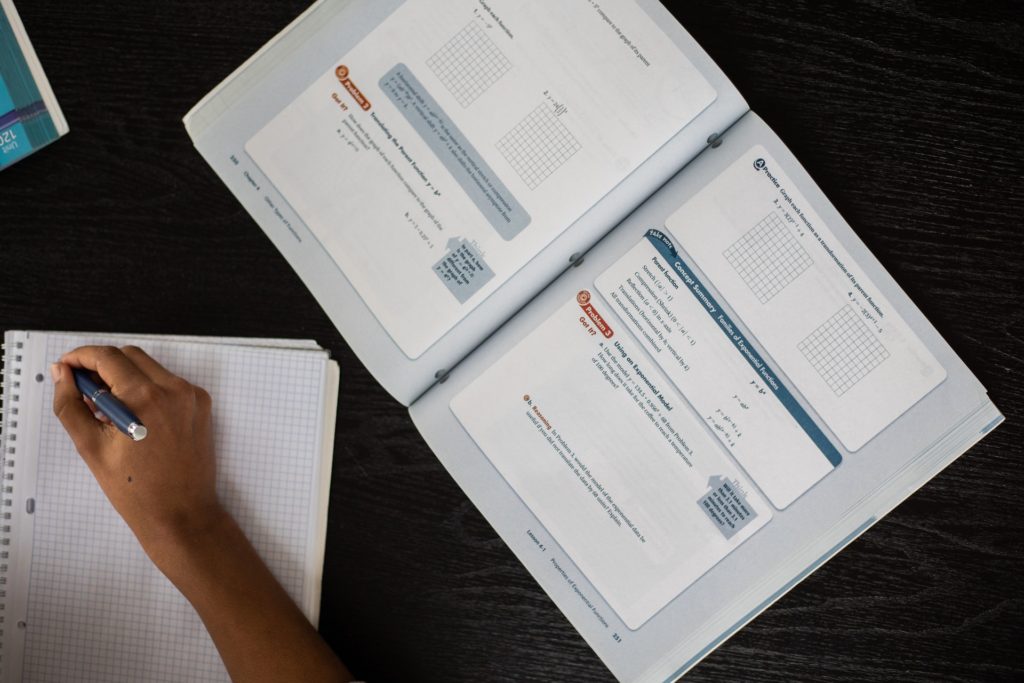Reading aloud, whether sitting on a parent’s lap or in a reading circle at school or the library, has tremendous benefits, especially for young children. While most people understand the importance of parents and teachers reading aloud to their very young children in order to help them learn to read and improve their vocabulary while they learn how to read themselves, many undervalue the benefits of reading aloud for students who have already learned to read independently.
The benefits of reading aloud are not limited to just speeding up the rate at which a child learns to read so that they can do it alone from then on, but instead also include allowing students to access more difficult materials, improving vocabulary more quickly than reading alone, and being a tender bonding moment between the reader and listener.
Research on the Benefits of Reading Aloud
- Reading aloud improves students’ reading abilities.
Reading aloud has many obvious benefits to improving a young child’s ability to learn to read themselves. By modeling how to match letters to sounds, where to pause, and turning pages one at a time in order, adults show young children how reading works. As the adult reads, especially if the adult engages with the text through pointing and discussing their thoughts as they read, the child will get familiar with the conventions of the written word and begin to learn what sounds the letters make, where to pause, and how written language is different from spoken language.
What is less studied however, is the benefits of reading aloud for students who have already learned to read by themselves. Many seem to think that it is better for students who are able to read without the help of an adult to read independently rather than be read to. While reading independently is an important skill that students will still need to develop, this isn’t the only reason one reads. When the goal is for students to get information out of a text rather than just learning to read, reading aloud has several benefits over reading silently alone.
One of those benefits of reading aloud is that listeners actually read longer when being read to due to enjoying it more. One study on University students studying foreign languages at the University of Bahrain showed that in addition to enjoying reading activities more when being read to, the students actually performed better on tests where the texts had been read to them compared to ones where they had been required to read alone silently. (Dhaif)

The reduced cognitive load allows the listener to focus on imagining the events and asking questions about what they are reading rather than just trying to understand what is written. When someone is read to, their brain doesn’t have to spend cognitive energy processing the text, sounding out unfamiliar words, or thinking about how they sound. Instead, simply listening to a story or text allows the listener to spend all of their mental energy enjoying and considering the information they’re being told.
While there are benefits to being read to, a study using audiobooks for 6th graders in the United States showed that having students read along while they are being read to had additional benefits. (Larson) Not only were the students able to learn to recognize words they hadn’t seen before, but the results of the study showed that the students could read for a longer time, improved their vocabulary, and enjoyed reading more when they had an audiobook to go along with the written text. In order to get the most benefits out of being read to aloud, listeners should follow along in the text themselves while perhaps taking notes of questions they have about the text.
So whether University students, 6th graders, or Pre-K children, reading aloud can impart more information and be more enjoyable. These benefits hold true whether the reader is live in person with the listener or recorded as an audiobook.
While it is important that students sometimes learn to simply read independently, teachers should balance the benefits of independent reading with the benefits of reading aloud for students. Reading aloud allows students to be able to understand more of what they read and actually get more reading done.
- Reading aloud allows students to access more difficult texts.
So when should teachers choose to read aloud and when is a good time for students to simply read independently? This can be a difficult question to answer and teachers should trust their professional judgment, but there are several factors that could help teachers in deciding.
One study found that one of the reasons that students are able to learn more and score more highly when tested on texts that are read to them when compared to texts they read silently is because “children’s aural comprehension ability outstrips their word recognition competence”. (Beck et al.) In other words, children find it easier to recognize and understand words when they hear them vs. when they see and read them. Because of this, students will be better able to tackle more difficult texts if the teacher reads it to them.
With this in mind, one reason teachers might decide that it is better to read a text aloud is if they worry it might be a bit difficult for the students. Reading aloud allows students to understand more difficult texts and keep them from getting disheartened and stopping without finishing in frustration. The teacher can even model what to do when they encounter words or ideas they don’t understand.
Because the teacher is reading aloud, they can mindfully pause reading and ask insightful questions or look up things online with students to show that not understanding something while reading is not only normal, but expected if the person is choosing an adequately difficult book, even for the teacher.
This will show students that reading is an active process and not one where they just mindlessly let the text wash over their eyes. As students read, they should be shown that it is great to stop, write something down, look something up, or ask a question.
Reading is an active process where, if done correctly, students should regularly be coming across things they don’t understand. If the teacher models how to do this, when students read things they don’t understand, instead of feeling stupid, they will know exactly what to do and that even the teacher has to go through the same steps.
- Reading aloud is a powerful bonding experience.

Another often ignored benefit of reading aloud is that it is considered by many to be a special bonding moment between the reader and listener. While this doesn’t really hold true for audiobooks, being read to, especially by a caregiver like a parent or teacher is often recalled as being a special time for the listener and reader alike. School is often seen as a trapping and frustrating place and time for students, but teachers who read aloud can be something students look forward to and look back on with fondness while still being educational and part of the day’s work.
A study from Scholastic in their Kids & Family Reading Report found that 92% of parents and 85% of children who had read aloud felt that it was a special bonding time for them. (Kids & Family Reading Report) This sense of closeness that listener and reader feel comes from sharing the reading experience together and is much more intimate than simply reading silently together in the same room. So not only can reading aloud be beneficial for comprehension and stamina when reading, it can also help to build relationships.
In a time of increased isolation from technology, activities that allow people to enjoy activities together become more and more important. Rather than a room full of people staring into their screens, one person reading aloud to the whole room achieves the same purpose while also bringing everyone closer together. Whether an intimate one on one reading session between parent or child or a teacher, librarian or even student reading to a whole room helps to reconnect people in a non-digital way.
Tips for Reading Aloud During Class
While the benefits of reading aloud should now be clear, there are ways to increase those benefits in class based on how the teacher conducts the read-aloud. While it may be tempting to simply provide students with audiobooks as this allows the students to get the benefits of being read to at any point, there are several benefits that reading aloud in person provides that don’t work with an audiobook.

- Reading aloud gives teachers power to mindfully guide the reading experience.
Obviously, simply listening to an audiobook won’t provide the relationship building benefits of the teacher reading in person, but in addition to that, an audiobook simply presents the text to students without pauses to stop and consider important points. Any Literature teacher knows that stopping regularly to ensure everyone is understanding and asking students mindful questions is crucial for understanding a difficult text.
This holds true for any read aloud. Whether reading about a scientific process or a historical analysis, an expert teacher will know when it might be beneficial to check in on students’ understanding, contextualize a confusing point, or help students make predictions about the text.
- Reading aloud gives teachers more power to influence student choices.
Another benefit to reading aloud is that it gives the teacher a bit more power in choosing the book and still keeping student buy-in and attention. One thing a teacher could do to get kids interested in reading further is to start reading a book and then stopping at a cliffhanger moment.
While a teacher can’t always read everything to their students, reading just a bit of a text and stopping at a moment that begs an answer or leaves students with an unsatisfactory ending will get more students interested in reading to figure out what happens next. While students need to do their homework without the teacher trying to sell the book to them, getting students to want to read without it being forced down their throat won’t just increase homework compliance, but also reframe reading as something they “want” to do rather than something they “have” to do.
Additionally, when teachers want to give students some choice, but also want to influence students to make good decisions, they can give students two choices. Either the teacher reads their choice aloud for everyone, or students have to read something else silently by themselves. Many students would probably prefer to have their second choice read to them rather than have to read their first choice silently alone. Because of this, teachers can get more buy-in on what they want students to read and still give them choice.
- Reading aloud can be a reward that changes students’ views on reading.
Having a read-aloud during snack time or between activities is a nice way to give students a break from tougher learning while still making use of time that might otherwise be wasted. Reading aloud is a perfect way to give students a break and works to reframe reading from “work” to a relaxing activity. When reading is something done during break, it changes how students view it. Instead of reading only being associated with work time, doing it during breaks reframes it as something fun.
Especially when students can choose the book, adding in a book to read during break times not only works to help kids read more, but also builds a happy classroom that learns to love reading time. It also doesn’t always have to be the teacher that does the reading aloud. Being the reader can be a reward for hard working students. This will not just reframe being read to as something fun, but getting to be the person who reads suddenly becomes something students strive for rather than the usual popcorn style reading where half of the students pass when it is their turn.
If the teacher can reframe reading in this way, it helps students to stop viewing books and reading as only something forced upon them, but something they look forward to. Letting students choose the book they want to read aloud as a reward not only benefits the way reading is perceived, but also encourages hard work so that they get to be the one who picks the books or does the reading. While this approach won’t work for all students, it still can be a useful tool to motivate some students, especially those who need a classroom “job” in order to be at their best.
Reading aloud has so many benefits whether done by the teacher, delegated to a student, or even just as an audiobook. The main benefit of reading aloud is that it is an enjoyable activity. People since time immemorial have loved being told stories.
Teachers can use this knowledge to help students access more difficult texts, build relationships in the classroom, and reframe reading as a fun activity rather than just something they do when they are forced. While most of the time students will still need to simply read their work alone, this research should show that there are certain times when it may be better to read aloud together to create community and just have more fun together in class.
Want more like this? Make Lab to Class a part of your weekly professional development schedule by subscribing to updates below.
References
Beck, Isabel L., and Margaret G. McKeown. “Text Talk: Capturing the Benefits of Read-Aloud Experiences for Young Children.” The Reading Teacher, vol. 55, no. 1, [Wiley, International Reading Association], 2001, pp. 10–20, http://www.jstor.org/stable/20205005.
Dhaif, Husain. “Reading Aloud for Comprehension: A Neglected Teaching Aid.” Reading in a Foreign Language, vol. 7, no. 1, 1990.
“Kids & Family Reading Report.” The Rise of Read-Aloud, Scholastic, 2019, https://www.scholastic.com/readingreport/rise-of-read-aloud.html.
Larson, Lotta C. “E-Books and Audiobooks.” The Reading Teacher, vol. 69, no. 2, 2015, pp. 169–177., https://doi.org/10.1002/trtr.1371.



